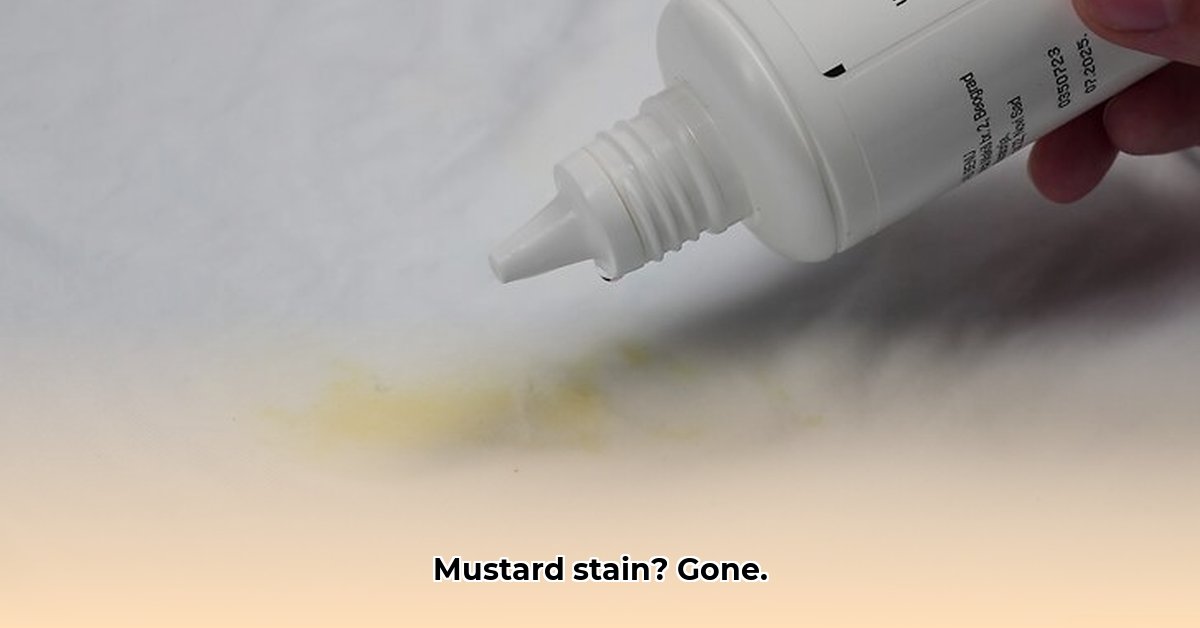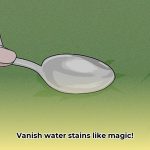Vanquishing Mustard Mayhem
Mustard stains are a common occurrence, but they don’t have to be a fashion disaster. This comprehensive guide provides effective strategies for removing mustard stains from various fabrics, whether the stain is fresh or dried.
Understanding the Enemy: Why Mustard Stains
Mustard’s staining power comes from turmeric, a potent natural dye, and tannins in mustard seeds. Heat sets the stain, making quick action crucial.
First Response: Act Fast!
The quicker you address a mustard stain, the better your chances of complete removal.
- Scrape: Gently lift off excess mustard with a dull knife, spoon, or credit card, working outwards. Avoid rubbing, which spreads the stain.
- Blot: Absorb excess moisture by blotting with a clean white cloth or paper towel, working from the outside in.
- Flush: Turn the fabric inside out and flush the back of the stain with cool running water to push the mustard out of the fibers.
Tried and True Methods: Your Stain-Fighting Arsenal
Several household items can effectively tackle mustard stains:
-
Dish Soap: Apply a small amount of liquid dish soap to the stain, gently work it in, and let it sit for 5-10 minutes before rinsing thoroughly with cold water. This is particularly effective on fresh stains.
-
Laundry Detergent: For stains that have had time to set, apply liquid laundry detergent directly to the stain and let it sit for 15-20 minutes before rinsing with cold water.
-
Oxygen Bleach: Soak the garment in a solution of cool water and oxygen bleach (follow package instructions) for 1-4 hours, or even overnight for stubborn stains. Oxygen bleach is color-safe and gentler than chlorine bleach.
Stubborn Stains: Advanced Techniques (Test First!)
For persistent stains, try these methods after testing in an inconspicuous area:
- Rubbing Alcohol or Ammonia (Washable, Colorfast Fabrics Only): Dampen a cloth with rubbing alcohol or non-sudsing household ammonia (never on silk or wool) and gently dab the stain. Rinse thoroughly.
- Hydrogen Peroxide and Ammonia (White Fabrics Only, Except Silk or Wool): In a well-ventilated area, apply hydrogen peroxide to the stain, add a drop or two of ammonia, let it sit for a maximum of 15 minutes, and rinse thoroughly.
Delicates and Dry-Clean Only
- Delicates (Silk, Wool): Sponge the stain with water, then apply a few drops of white vinegar. Blot and rinse thoroughly.
- Dry-Clean Only: Take the garment to a professional dry cleaner. A dry cleaning solvent may be used at home, but test it first.
Fabric-Specific Strategies
| Fabric Type | Recommended Method(s) |
|---|---|
| Washable | Dish soap, laundry detergent, oxygen bleach, rubbing alcohol/ammonia (colorfast only), stain remover |
| Delicates (Silk, Wool) | White vinegar, professional cleaning |
| Dry-Clean Only | Professional cleaning, dry cleaning solvent (test first) |
| Carpet/Upholstery | Dish soap and water, blotting, rinsing, air drying |
The Final Wash
After pre-treating, launder the garment as usual in cold water. Air dry until the stain is completely gone. Avoid using hot water or the dryer until the stain is removed, as heat can set the stain.
Preventing Future Mishaps
Prevention is always the best strategy. Use bibs or napkins, consider pre-treating sprays, and practice careful condiment handling.
Identifying Fresh vs. Dried Mustard Stains
- Fresh: Wet, bright yellow, may have a vinegar smell. Requires immediate attention.
- Dried: Dull, crusted appearance. Requires pre-treatment and soaking.
Troubleshooting Stubborn Stains
If the stain persists after initial treatment, try:
- Repeated treatments: Some stains may need multiple applications of the chosen method.
- Longer soaking times: Extending soaking time with oxygen bleach or enzyme pre-soak may be beneficial.
- Professional cleaning: For delicate fabrics or stubborn stains, consult a professional cleaner.
- Combination of methods: You may find it helpful to combine methods. For example, using detergent first, then followed by an oxygen bleach soak.
By following these tips and adapting techniques to your specific fabric and stain type, you can successfully remove most mustard stains and keep your clothes looking their best. While current research suggests these are the most effective methods, ongoing studies may yield new insights in the future. Please share your own stain-fighting experiences and tips in the comments below!
- How to Remove Water Stains from Fabric: A Complete Guide - April 26, 2025
- How to Get Motor Oil Out of Clothes: Proven Methods & Expert Tips - April 26, 2025
- How to Get Deodorant Out of Black Shirts: Easy Stain Removal Guide - April 26, 2025










